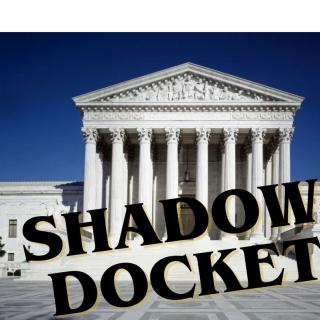Editor’s Note: As described in the last Mary Jane’s Guide article, the Governor and General Assembly indicated that they want to make substantial changes to Issue 2, which passed on November 7th with the approval of over two million Ohio voters. These controversial changes are occurring at the last minute with the introduction of two bills, H.B. 326 and H.B. 341, intended to modify certain sections of the Ohio Revised Code that already contain the Issue 2 ballot language. This is a tight timeline if these modifications are to be made before December 7th, Issue 2’s effective date.
Here is Mary Jane’s planned testimony, should lawmakers hold hearings.
=-=-=-=-=
December 4, 2023
Greetings, My name is Mary Jane Borden. I call myself a two-name person. Mary Jane is my birth name. I have been a face in Ohio’s cannabis community for well over 20 years. During this time, I have been intricately involved with the plant and its legalization movement. One goal has been Issue 2. Toward this end, I cofounded a half dozen organizations – charitable 501(c)(3)s, advocacy 501(c)(4)s, and political action committees. I have written legislation and constitutional amendments and given hundreds of media interviews. Under the moniker, “Mary Jane’s Guide,” the Columbus Free Press has published over 100 of my cannabis-focused articles on assortment of topics, with six of the most recent devoted to Issue 2.
I work independently and uncompensated. I also hold an MBA and served nine years as a market analyst and project manager for Adria Laboratories, in its time, the largest U.S. marketer of cancer chemotherapy drugs. I am an active purchasing patient in Ohio’s Medical Marijuana Control Program.
I believe I am professionally qualified to offer commentary on Issue 2, as well as cannabis in Ohio.
Today, I am offering testimony concerning possible changes to Issue 2. The favorable vote of 2.1 million Ohioans passed this citizen-initiated statute on November 7th by a solid 57-43% margin. Thirty days after passage – December 7th – the measure goes into effect.
For unclear reasons, the one-party dominated General Assembly wishes to amend the statute as opposed to allowing the version approved by two million voters to become law. I am an Ohio voter who believes that the new statute should remain as is.
SENATE RESOLUTION 216
One of my greatest fears is that the General Assembly will use Senate Resolution 216 as the basis for its anticipated changes. With all due respect, this would be a grave mistake. This document is riddled with errors, omissions, redundancies, and falsehoods. Its quick, sloppy composition and publication shows. My October 2023 article for the Free Press reviewed the resolution in detail; were I a teacher, S.R. 216 would at best receive a “C.” A copy of my rebuttal to S.R. 216 is linked below.
UNINFORMED VOTERS
I understand that Senate President Matt Huffman “contends the initiative is lacking in detail, implied Ohio voters were either duped or not quite intelligent enough to have understood specifics.” I think Ohio voters would take exception to this perception.
As just one party, I have personally composed a litany of material concerning cannabis, its legislation, its opponents, its businesses, and so much more. A list of links to my work appears at the end of my written testimony. Through the Columbus Free Press, these materials reach over 100,000 visitors per month. And the materials pollinated to other webpages, social media platforms, podcasts, and webinars during the election cycle and over the last two years, educating Ohio voters along the way.
The statute itself was initiated by “We The People” but composed by legal scholars, cannabis experts, and industry leaders. Their knowledge, background, and skillsets allow them to understand the plant and its market better than most anyone else. Naturally, their understanding far outshines that of lawmakers. In my educated opinion, the ballot language for Issue 2 is well-written, logical, and composed based on considerable expertise.
LAW ENFORCEMENT FUNDS
Issue 2’s ballot language creates five funds for the dispersal of tax revenue: adult use tax fund (all initial deposits), cannabis social equity and jobs fund, host community cannabis fund, substance use and addiction fund, cannabis control and tax commissioner fund. H.B. 341 introduced by Representative Gary Click (R-88) and H.B. 326 introduced by Representative Cindy Abrams (R-29) propose to allocate a portion of the Issue 2’s tax proceeds to law enforcement under two new funds: an additional “substance abuse and recovery fund” and a “law enforcement cannabis training fund.” Creation of these new funds subtracts as much as 17% (36% - 19.2%) from each of the other three funds (cannabis social equity and jobs fund; host community cannabis fund; and substance abuse and addiction – under another name).
Two problems here: 1.) I fail to see the need for an additional substance abuse fund since its services are already covered and paid for by the “substance abuse and addiction fund.” 2.) More importantly, the “law enforcement cannabis training fund” presents a conundrum. Issue 2 legalizes cannabis in Ohio. Violations in production, distribution, purchasing, and possession are largely civil matters whose penalties take the form of fines, fees, and revocation of licenses. “Administrative expenses related to marijuana offenses” are the province of regulators not police. Further, Issue 2 regulations should support the cannabis social equity and jobs fund as originally intended. Equity rights the wrongs of the drug war, which is important, but it also brings these challenged people into the workforce where good jobs add revenue to Ohio’s coffers and undercut illicit activity that might involve police. Shouldn’t the ultimate goal of a legal market be well-paying jobs and a vibrant industry where there would be little need for more police?
MAXIMUM THC
Issue 2 reads (edited – emphasis mine), the “tetrahydrocannabinol (THC) content limit … for plant material … shall be no less than thirty-five percent and for extracts … no less than ninety percent.” I can see how some readers might infer that those figures are baseline not ceiling. The LIMIT – the maximum THC – cannot be less than those percentages. This means that THC values can number UP TO that amount, but not exceed it. Ohio’s medical marijuana program uses this approach and approximately the same numbers (35% max for plant material and 70% for extracts). THC ranges on dispensary shelves fall far below the maximum.
As to THC itself, this cannabinoid is, of course, one of the best-known components of cannabis but also the most therapeutic. Here’s a stunning statistic:
The Controlled Substances Act of 1970 placed marijuana in its most restrictive Schedule I, barring research. In 1976, scientists with the National Cancer Institute found in their study “Antineoplastic Activity of Cannabinoids” that THC retards tumor growth, which has been borne out in more recent studies. From 1970 to 2023, 27.1 million Americans died of cancer. Maybe you know a friend, relative, coworker … What if … just what if … the “cure for cancer” lay right under our noses. What if lawmakers had taken a less restrictive approach – legalized marijuana thereby permitting research as recommended by the Schaffer Commission Report in 1973. What if just half of those cancer deaths could have been prevented via THC? That’s fourteen million people could have been spared the agony that is cancer. My point is that, as opposed to being a “boogie man,” THC is highly beneficial. Under the cancer scenario, more THC – higher percentage levels – can be a very good thing.
I’m a witness. After a breast cancer diagnosis, I opted for THC in lieu of chemotherapy, something with which I was very familiar from my Adria days. I’m three years out from that diagnosis and have experienced some of the best health of my life.
HOME GROWING
Issue 2 is named “Regulate Marijuana Like Alcohol.” One feature of alcohol regulation is the ability to make beer or wine at home. “Homemade beer or wine” is defined as: “beer that is brewed or wine that is fermented by an individual's own efforts and not for commercial purposes.” The hallmarks of this policy include: 1.) no permit required, 2.) neither homemade beer nor wine may be sold, 3.) homebrewer does not receive compensation, 4.) homebrewer only ferments in small, predefined amounts.
This is exactly what the home growing provision of Issue 2 does: limits the amounts produced, specifies location as primary residence, bars underage access, bans sales, and prohibits processing.
Home grow is also permitted in 22 other states, so it is not a foreign concept. In fact, all fifty states permit home brewing and vinting. There is an age-old idiom, grounded in English Common Law, holds that, as the “ruler” of one’s space [castle], a person can do as they please within it, including the personal freedom to grow a few non-commercial plants – or brew a little non-commercial beer or wine. Please see Mary Jane’s Guide on home growing in the links that accompany this testimony.
SECTION 280E EXEMPTION
One item not covered by Issue 2 is the federal taxation code of 280E. Because marijuana holds the most restrictive Schedule I classification federally, cannabusinesses cannot deduct ordinary business expenses. This causes their tax bills to soar and contributes to the high prices in Ohio’s cannabis market. While Ohio lawmakers cannot change federal scheduling or law, they can pass a state-level exemption, similar to Illinois, that allows Ohio businesses to deduct these expenses from their state-level taxable income.
GENERAL ASSEMBLY HAD ITS CHANCE
The structure of citizen-initiated statutes guarantees that the General Assembly has a number of opportunities to address its concerns and place its preferred language in the new laws. Signature gathering for such initiatives occurs in two rounds. On January 5, 2023, right after collection and certification of the first round, the proposed Regulate Marijuana Like Alcohol statute (Issue 2) was transmitted to the Ohio legislature by Secretary of State LaRose. Lawmakers were given four months to make changes, add new language, or delete provisions they didn’t like, but the legislature remained silent. It could also have introduced its own bill or passed one of five adult bills: H.B. 210, H.B. 382, H.B. 498, H.B. 628, and H.B. 168. So, voters took adult use cannabis into their own hands and handily passed Issue 2, which now resides – currently intact – in the Ohio Revised Code. It’s only now at the very last minute that the General Assembly apparently wants to defy the will of over two million voters and override Issue 2.
FINAL THOUGHTS
As mentioned earlier, Issue 2’s ballot language is well-written based on the considerable expertise of legal scholars and industry players who composed it. Still, the Governor and General Assembly seem intent on making poorly considered changes at the very last minute regarding public smoke, advertising to children, THC levels, impaired driving, tax allocations, home grow, and more. Overseeing each of these is a regulatory body, and in each, is language that empowers that body to craft regulations, penalties, and even amendments. I ask that Ohio lawmakers please give this initiative time to roll out as intended. Certainly, they can step in and fix problems should they arise, but allow the will of the people to prevail. Remember, that’s what freedom, liberty, and democracy are all about.
=-=-=-=-=
IMPORTANT LINKS
Here is a presentation version of this S.R. 216 Rebuttal.
Here is the full text of the Ohio Senate Resolution 216.
Here is the full text of the Regulate Marijuana Like Alcohol (RMLA) statute.
Here are bullet points that outline the RMLA’s provisions.
Here is a document that overviews the initiated statute process using the RMLA as an example.
Here is the legislative language of H.B. 168, the Enact Adult Use Act, similar to the RMLA.
Here is Mary Jane’s Guide “Home Grow – 15 Reasons Why.” March 2022.
Here is Mary Jane’s Guide “Initiate this: Adult Use Comes to Ohio.” December 2022. Deep dives into the RMLA.
Here is Mary Jane’s Guide “Just Say NO! to Issue 1.” May 2023. Covers Issue 1 and the RMLA, offering a historical backdrop.
Here is Mary Jane’s Guide “UPDATES: Issue 1 – RMLA – Courage in Cannabis Launch.” July 2023. Updates on the August special election concerning Issue 1 (upping the passage percentage for constitutional amendments) and the RMLA.
Here is Mary Jane’s Guide “Adult Use Marijuana & Courage in Cannabis Updates.” August 2023.
Here is Mary Jane’s Guide about Angelica Warren with an update on the RMLA. September 2023.
Here is Mary Jane’s Guide “WE WON! Two Million Strong! Issue 2 OK’d by Voters, “The Ohio Way.” October 2023.
Here is a Wikipedia entry about the RMLA.
Here is an analysis of cannabis opponents in the State of Ohio.
=-=-=-=-=
Mary Jane Borden is a best-selling author, skilled graphic artist, insightful analyst, and award-winning cannabis activist from Westerville, Ohio. For nine years after earning her MBA in finance, she analyzed the global cancer chemotherapy market for a major pharmaceutical company. Then, during her 40-year career in drug policy, she co-founded seven cannabis-oriented groups, co-authored four proposed constitutional amendments, lobbied for six medical marijuana bills, penned over 100 Columbus Free Press articles, and has given hundreds of media interviews. She is one of the Courage in Cannabis authors, with articles in both editions. Her artwork can be viewed at CannabinArt.com and she can be reached at maryjaneborden@ gmail.com.



